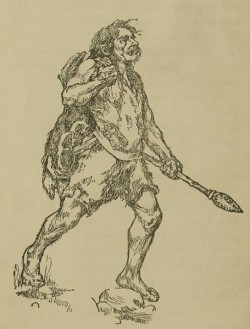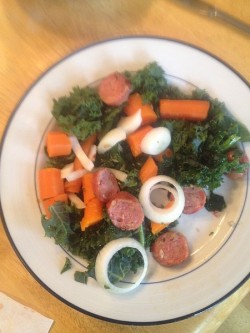The trends for food, nutrition and weight loss are always a bit staggering every
Once something hits and becomes the end-all in popularity, it quickly fades away only to be seen as harmful to your health. I believe this takes into account absolutely every food source and dietary habit in existence today.
The decision to abandon a healthy protocol regarding whether a specific diet will work for us, or not, depends on the latest studies and whatever fitness magazines are touting, or what online health resources dispense to aid in their cause to get us to take notice or beware.
In all my years as a nutritionist and health professional I have never seen such an explosion and controversy as the Paleo Diet, and whether or not this type of lifestyle can benefit us, or be harmful over the long haul. I want to be sensitive to the omnivore movement here, as any humane way of feeding a Paleo person won’t be easy on the ears for those who choose to forego the carnivore path of eating.
The Paleo way of living is a very specific dietary decision based on many
factors, which (thankfully) does include a sensitivity to animals, that is, if the source of the food is grass-fed, hormone-free and free-range.
 The ingestion of meat and fat is a carnivore-lovers’ dream,
The ingestion of meat and fat is a carnivore-lovers’ dream, and it takes the paleo person back to their ancestral days of being a lean mean hunting machine. And that is where the Paleo movement has possibly gone too far, relying on it solely for weight loss without considering the repercussions of whether too much protein is actually good for us, or overloading the digestive system. The animal rights groups are another matter altogether, but Paleo is hot and if you want to lose weight, it’s even hotter.
This is not to discount omnivores at all; nor am I referring to the differences between carnivore and omnivore, I’m simply noticing that more and more people who seek to shed some pounds and increase their stamina in exercise and muscular stature are resorting to the Paleo Diet.
Carbohydrate-lovers take heed—the only satisfaction you will receive from this hunter-gatherer way of living is through vegetables, nuts, low glycemic fruits, and potatoes (sweet potatoes, all the better). There is not a bread loaf (not even gluten-free), rice cake, corn tortilla, or bean burrito to be had. Paleo people do not believe in any of these foods as a source of protein.
This may come as a surprise to many would-be Paleo aficionados, as legumes and beans (including soy and peanuts) might be considered to be an extremely healthy and nutrient-filled supplement to add to a diet free of breads and grains. But the contemporary Paleo diet detracts anyone from the bean and legume category, as the protein content alone of this group is about 25 percent lower than the average meat and dairy group.
Here’s the deal though, while eating animals might have its drawbacks in conscious living and eating, the bean and legume group falls into the poorly digested category of foods, soy and corn being the worst. They are ranked the lowest in protein content and incredibly hard on the intestines. This is also tough to digest in the mind, as beans represent a huge portion of healthy living for most people.
Paleo eaters may rejoice in the fact that the reduction in their bellies and overall cellulite-free lifestyle is to be admired and revered. The CrossFit and P90X die-hards are hardly singing any vegetarian’s praises, as they pull up, push up, and kettlebell their way to greatness.
But, a high protein diet may increase your risk of osteoporosis, put too much of a strain on the kidneys, increase your chances of cancer and cause severe nutritional deficiencies due to the lack of a variety of other necessary nutrients. If the Paleo diet is to be considered a workable nutritional way of eating, it must be done thoughtfully and with enough preparation and information as embarking on a vegetarian or vegan diet.
I remember back in my personal training days in the late 80s to the mid 90s, the very thought of a high-protein diet was considered abnormal and over the top. We were a group of carbohydrate junkies, salivating for the next meal of whole grains, beans, cheese, veggies and tofu. We may have thrown in the occasional turkey burger for good measure, but more for a change of pace rather than the health benefits of eating meat.
I have dabbled in almost all ways of eating, omnivore and carnivore alike. My main concern is the health of the planet, the humane way of hunting for food, the alleviation of toxicity from all foods in general and how any diet I embrace affects my energy and overall wellness. Some days I can’t stand the thought of meat, which leads me to believe I need lighter fare, and vegan or vegetarian options to accommodate what my internal organs are screaming for at that moment.
Another potential pitfall is the discrepancy over the milk and dairy group as being part of the Paleo Diet. If left up to the consumer, the message is to beware of the reactions from having too much milk, some of which are severely allergic (acne, gut response, mucous production), even if you are not lactose-intolerant.
While our ancestors never thought twice about eating milk products, it is our Western culture that has included some of it in the Paleo movement. Hormone-free dairy products (ice cream, butter, and milk) have made their way into diets free of grains. Beans and legumes, however, were not a choice that hunter-gatherers had to make.
 While you might feel eating Paleo lacks the carbohydrates from grain products, milk products, and its derivatives, they are still considered a very saturated fat. A good alternative would be to opt for ghee (clarified butter), coconut oil, or other nut milks that provide the monounsaturated fats, quality and nutrients for a healthy diet. Having to hurdle over the immune responses and allergic reactions to the specific protein components in milk doesn’t seem worth it when sticking to a solid Paleo Diet.
While you might feel eating Paleo lacks the carbohydrates from grain products, milk products, and its derivatives, they are still considered a very saturated fat. A good alternative would be to opt for ghee (clarified butter), coconut oil, or other nut milks that provide the monounsaturated fats, quality and nutrients for a healthy diet. Having to hurdle over the immune responses and allergic reactions to the specific protein components in milk doesn’t seem worth it when sticking to a solid Paleo Diet.
This leaves the Paleo world full of wild seafood, free-range animals, farm-fresh vegetables from the garden, and a wealth of raw nuts and seeds to satisfy the palate. While I believe the dietary movement of eating meat and all foods that were grown or raised humanely takes us back to our early days as humans, I don’t feel the diet is for everyone.
I know from my own experiences that I vacillate somewhere between omnivore and carnivore, but I do tend to feel leaner and better when I consume higher levels of Paleo protein, and I’m not referring to protein bars either, whose nutrition labels alone read like the Constitution.
The Paleo movement isn’t some hokey newfangled diet that wormed its way into our lives the past few years. We have simply glamorized it as the only way to eat (same with the gluten-free movement) when these types of diets need to be individualized. So, we have to be sensitive to people making their own choices. Paleo eating is not the end-all in nutrition and health. Being mindful with food and where it comes from and how it feels in your body is far more important than any one singular way of eating.
Love elephant and want to go steady?
Sign up for our (curated) daily and weekly newsletters!
Editor: Travis May
Photos: Paleo Food, Caveman, Paleo Plate












Read 7 comments and reply